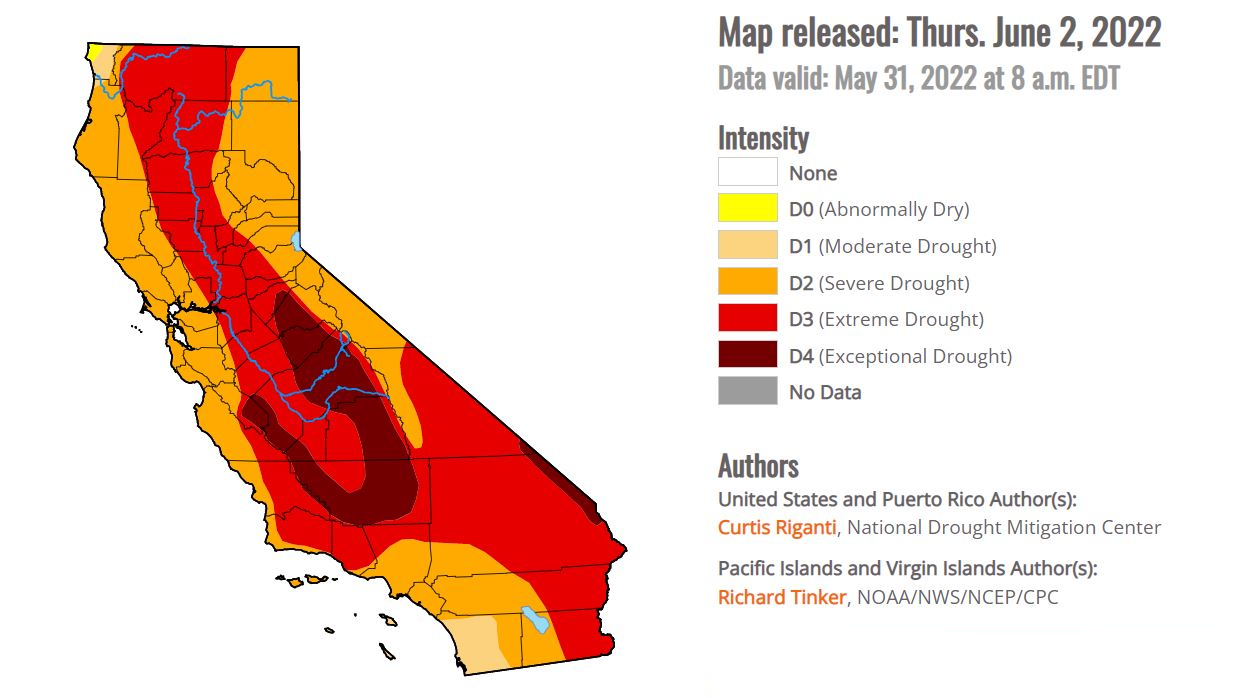Editor’s note: While it’s increasingly clear that the need for climate action is urgent, it can be hard for an individual to know where to start. This year we are featuring specific actions you can take authored by UCSB lecturer in Environmental Studies, Deborah Williams.

“As Earth’s atmosphere continues to warm due to climate change, droughts are becoming more frequent, severe, and pervasive. The past 20 years have been some of the driest conditions in the American west on record,” according to NASA.
Conserving water has never been more important. As we enter the driest months, Santa Barbara and Ventura counties are classified as being in either “Extreme Drought” or “Severe Drought.”
It gets worse: Before the current drought, California urban areas had cut their average water use from 180 to 146 gallons/day. Since then, it has increased in most parts of the state including our area.
Fortunately, there are strategies we can adopt, reducing our water consumption and energy use. Simple techniques also save you real money!
Some of the best approaches are:
Save Water in the Shower, especially by using low-flow showerheads. An average U.S. household can save around 2,700 gallons of water annually and 330 kilowatt hours of electricity (enough to power a house for 11 days) by installing just one low-flow showerhead. Details are at: www.epa.gov/watersense/showerheads Low-flow showerheads are low-cost and can reduce water use by up to 60%.Check out the best here: 7 Best Low Flow Shower Heads (2022 Reviews) - Sensible Digs
Use a bucket while waiting for it to get hot, capturing about 10% of a shower’s water goes down the drain. Then use the bucket to water plants, or use it to flush the toilet, slowly pouring slowly into the bowl (tank water will be retained). How often should we shower, anyway? Research (Harvard et al) concludes showering a few times per week is plenty for most people, is better for your health, and saves lots of water and energy.
A showerhead leak of one drop per second wastes over 1,660 gallons of water a year. So, fixing leaks quickly, saves you money, too. There are lots of good guides and YouTube videos to help you do this.
Use Greywater Systems. Consists of domestic wastewater from households, free from fecal contamination. Sources include washing machines, showers, sinks and baths.
Notably, every load of clothes generates 15 to 40 gallons of greywater. Estimates note that up to 40 gallons of graywater/person/day is available in SoCal. A home could reduce irrigation by 5% to 30%.
The simplest greywater “systems” involve collection buckets to catch water that only contains soaps and mild detergents. More complex systems use plumbing to transport the greywater from our clothes washers, bathtubs, showers and sinks for irrigation. (If your home uses a water softener be aware the salts might harm plants.) Here is a schematic example of a greywater system.
There are specific California state requirements for a Greywater systems. Fortunately, “Laundry to Landscape” systems and most “Showers to Flowers” systems do not require a permit statewide.
Santa Barbara County has a “Greywater Handbook” with more detail, including a section on doing it yourself. Ventura County also has guidance here:
https://vcrma.org/water-use-and-efficiency-information
Transition to Drought Tolerant Landscaping. Irrigation accounts for about 50% of annual residential water consumption in California, so replacing a lawn with such landscaping can achieve a 30 – 60% water savings.
There are the 2 basic stages to creating a drought tolerant yard: Make a plan (here are 8 steps, including use of non-plant material such as rocks) and construction (purchasing plants etc. and, if necessary. Permits. Do it yourself or hire professionals. Even incremental changes make a positive difference.
The City of Ventura’s brochure “Ventura Water Wise Landscaping” has guides and contact numbers; and here is a great “Water Wise Gardening in Ventura County” website, which includes “Find the Right Plant” and another on “Lawn Substitutes.”
Santa Barbara County also has a similar website, and “Water Wise Native Plants for Santa Barbara County.”
Detect and Fix Leaks. Finally, you can get a home leak detection system featuring alerts such as https://flumewater.com/ -- saving you water and money. There are many step-by-step guides on the internet.
For the sake of our environment and future generations, we can do better.
